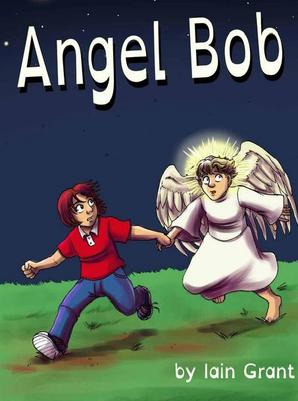
It tells the story of a lonely girl called Myrtle who meets a young angel after he crash-lands at a nearby allotment. Myrtle names the angel Bob and vows to help him return to the Celestial City but the villainous Professor Hoom wants to capture Bob and study him.
Angel Bob is best described as Roald Dahl meets Pigeonwings. The novel has a light, playful tone that will appeal to young readers but it shares the plot of Grant's comic novel Pigeonwings, which also told of an angel being stranded on Earth and being baffled by everyday life.
Like all good children's literature, Grant presents the everyday with the fantastic. Trivial acts which children can relate to (feeding pets, visiting the library, playing in the playground) are presented alongside the magical arrival of the angel and his tricks (glowing halo, healing hands, feathered wings). The clash of worlds between Myrtle and Bob allows for plenty of wonderful writing.
Grant reins in his extensive vocabulary (see the Sedgewick Papers for examples of that) and delivers unfussy prose instead. Despite the language being aimed at a young audience, the writing remains strong and Grant manages to convey complex emotions with simple words and images.
For instance, when describing the villainous Professor Hoom: "There was something about him that Myrtle found a little, well, creepy. Maybe it was his extraordinary long fingers or his shiny little eyes or maybe it was neither of those things. She couldn't explain it, even to herself." This basic description is ideal for young minds, allowing the imaginations of children to fill in the details. There is humour too. The children discuss glowing sheep, Hoom repeatedly bellows "Observe!" and Bob discovers a passion for toast.
Ultimately, this is a sweet story about friendship and a charming read for young minds.
